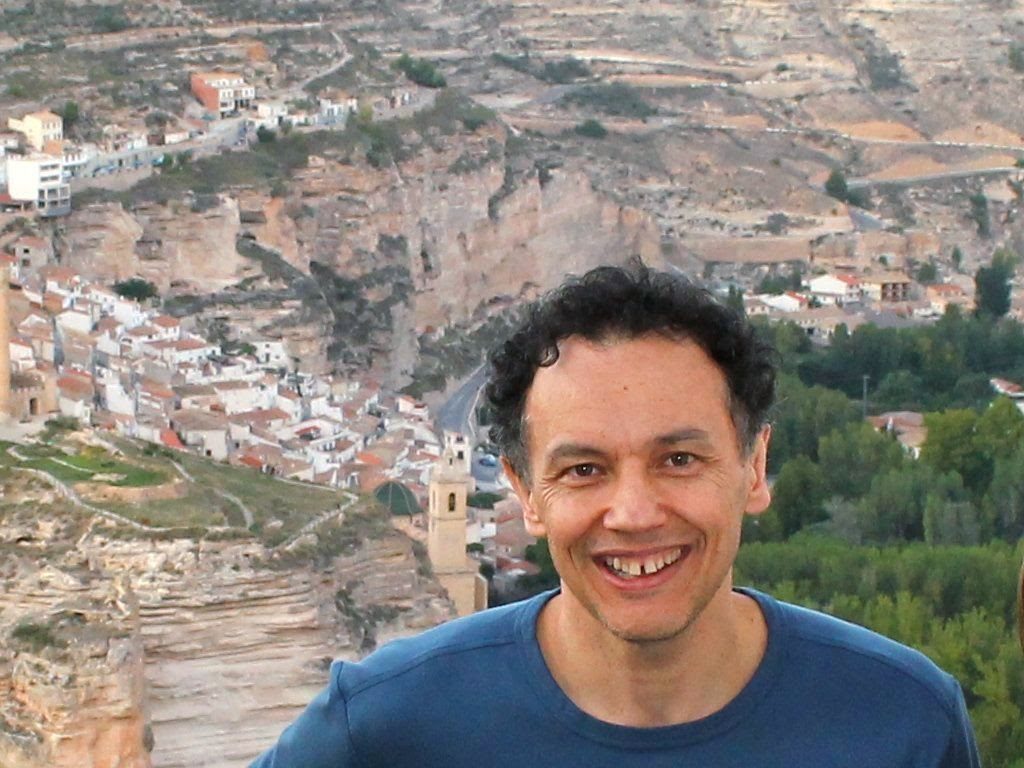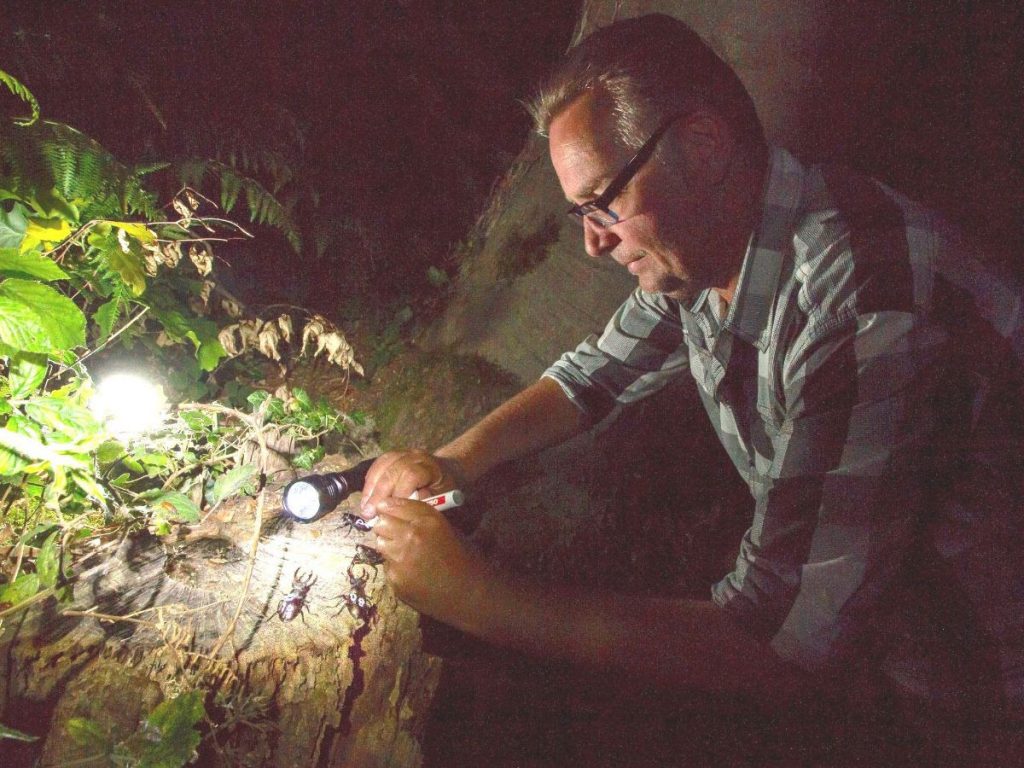
Antonio de la Torre

Harry Derksen
Antonio de la Torre lives in Spain and is a member since July 2017. Harry Derksen lives in the Netherlands and he’s a member since November 2016. Here is what we asked them:
ESBMN: Tell me a bit about you and how you got interested in stag beetles.
Antonio: I have always liked nature since I was a child, and I am still interested in learning more about animals, plants and ecosystems. I was born in Spain and I think I’m lucky because so much nature is still preserved around me. Later on, I learnt that the most common animals in the world are insects; I learnt many facts about them and I was surprised that they could be as fascinating as big mammals. We know most insects are small but there are also some very big ones like the stag beetle!
Harry: About 15 years ago somebody took me on a trip to watch stag beetles. I only knew this species from pictures and I didn’t know it was living so close-by in a neighbouring nature reserve. Due to the presence of this species, this nature reserve was even protected as a European Natura 2000 site. Since then, I went back every year in search of this magnificent beetle.
ESBMN: How did you discover the network and what made you sign up?
Antonio: I discovered the network two years ago in a short notice calling for volunteers published in a magazine related to nature and environmental issues named Quercus. I read it at the end of June, a bit late, and I contacted the network coordinator in Spain and he told me it was better to do it properly next time and that they would be glad to contact me again for the next season. They did! and here we are, it’s nice to be part of the network.
Harry: In 2014 I was asked to join in a study on the dispersal of this species in the Netherlands. We captured, marked and released all the beetles we found each evening. Twenty of them were even given a tiny radio-transmitter to follow up on their movement during their short adult live. I loved to do this! At the end of 2016, I heard about the European Stag Beetle Monitoring Network website and immediately decided to join in.
ESBMN: Could you tell us what you like about walking the transects?
Antonio: Transects are beautiful because they happen in the heart of the forest. For my transect, I walk narrow paths between many trees, I spend most of the time looking up to see the beetles appear against the treetops. The most special moment for me is on the way back when I finish the transect. It’s normally dark, and inside the forest it’s even darker. At the beginning the path shines enough to follow it but later I need to use my headlight, the forest completely surrounds you…
Harry: My transect is one kilometer from my home so I can walk this transect quite often. In the last years, more and more people come to this please to see this rare beetle which leads to many pleasant and educational encounters.
ESBMN: Is there anything you have discovered about stag beetles since you’ve become a volunteer that you didn’t know of before?
Antonio: Yes, there is! I’ve learnt that stag beetles only feed on dead trees. It’s nice to understand that when an oak tree dies it can still be the support for so much life, a new life starts on it. I have also learnt some local names, for example in Galicia and in Portugal the stag beetle is called “vacaloura”, which is not named after the antlers of a stag but a “vaca” cow, and “loura” which means a color like a chestnut.
ESBMN: What other similar beetles do you find on your walks?
Antonio: I have found the rhinoceros beetle (Oryctes nasicornis) which also has a spectacular horn; the great capricorn beetle (Cerambyx cerdo); and ground beetles (Carabidae), I like them because they are hunters, and at their own scale, fearsome predators.
Harry: Besides many ground beetles, I also find the lesser stag beetle (Dorcus parallelipipedus) in this location. And when stag beetle season is nearly over, another large beetle starts to appear, the sawyer beetle (Prionus coriarius), it’s equally impressive and much better flyer!
ESBMN: Have there been any memorable walks or any incidents during your walks?
Antonio: Yes, one evening the weather conditions were very warm and humid and I saw some beetles fly over me while I was driving up the road towards the transect. When I started walking, the first beetles appeared quite soon but as the transect developed it was no better than any other day so I started feeling a bit disappointed. Then I noticed there was a difference in their behavior, they were doing larger flights than usual, it seemed they had decided to fight that night. It was getting darker and I was approaching the end of the transect when I noticed one beetle flying to a small oak near the border of the transect. When I approached the oak tree, I discovered there was a large concentration of males fighting one another! New beetles kept arriving and perching themselves on the trunk and branches of the tree. The oak was small, just double my height and I could see the whole tree easily; the beetles didn’t pay much attention to me so I took some pictures trying not to interfere with them too much. I wasn’t able to count them all properly but I saw more than a dozen of them!
Harry: I especially remember my transect walk on the 20th of June 2018. There were lots of visitors but also loads of stag beetles, I counted 40 in jut 2 full hours. When the darkness fell, a number of bats started to actively hunt the stag beetles. After this spectacle, my evening ended with the dance of a dozen of fireflies. A evening hard to forget!
ESBMN: Do you have any tips for new volunteers?
Antonio: For new volunteers I would say how important it is to know how to recognize mature forests. Stag beetles are a good indicator of forest health. My advice is to try to find a good place where you’ve seen them before, if not, speak with people in the villages, I find this has been specially helpful. Another tip is that the transect should go inside the forest but it’s also good to have some open parts, clearings with grass give way to more diversity and stag beetles are able enough to fly through them, it’s also easier for you to see them in an open place.
Harry: As hint to fellow volunteers I would say to not pick up the beetles by hand, for example to remove them from the road. It is better to use a branch, especially because others, often children, start copying you and doing this with less caution sometimes results in the loss of one or more legs for the stag beetle, not the children!

